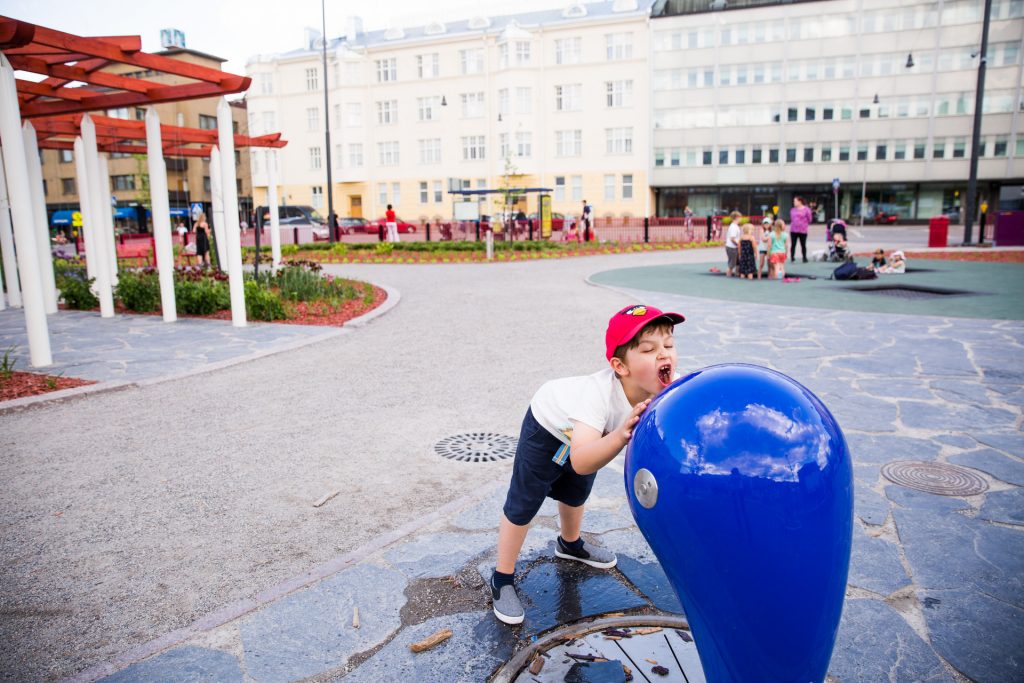Protecting groundwater resources is especially important in Lahti as the city is located near one of Finland’s largest groundwater reserves, the Salpausselkä ridges. The first Salpausselkä passes through Lahti, with the majority of the city concentrated on and around the ridge. The second Salpausselkä runs along the city’s northern border.
Groundwater refers to water stored in the soil and fractures in the bedrock.
Groundwater is formed practically everywhere, but the soil’s properties determine how easily it can be extracted and used. Groundwater areas refer to areas where groundwater is formed and available for use for water supply. A separate category of groundwater areas are groundwater regeneration areas, where the soil is particularly permeable to water. They are particularly important to the formation of groundwater. There are 15 groundwater areas in Lahti that are important or suitable for water supply.
Ground source heat in groundwater areas
The City of Lahti has imposed restrictions on the use of ground source heat aimed at securing water supply and ensuring the safety of certain tunnel structures.
In Lahti, restrictions on ground source heat are based on the principle that ground source heat systems may not pose a risk to water supply. In other words, a site’s location in a groundwater area does not automatically prevent the use of ground source heat. The guidelines comply with those issued by the Ministry of the Environment in 2013.
Intake wells at water pumping plants in Lahti must have a safety zone of at least 500 metres in which ground source heat systems may not be installed. Still, each project is always considered on a case-by-case basis, and a larger safety zone is required in certain areas that are particularly sensitive to water supply.
The restrictions are stricter for horizontal ground loops. In Lahti, such systems are banned in groundwater areas. The restriction is due to excellent water permeability in these groundwater regeneration areas, which makes them especially vulnerable to groundwater pollutants. On the other hand, horizontal ground loops are usually not technically suitable for use in groundwater regeneration areas due to their soil makeup of mainly gravel and sand.
The Lahti area has two tunnels excavated deep into the bedrock, one connecting the Lahti Aqua wastewater treatment plants and the Lahti Energia cooling water tunnel. The tunnels have a safety zone of 100 metres within which heat wells may not be installed. This protects them against damage caused by excavating too close to the tunnel.
Detailed guidelines on the placement of ground source heat systems on properties are given in the City of Lahti building code.
Groundwater conservation
In groundwater conservation, preemptive measures plays a key role. Land use planning, permit practices and guidelines all aim to protect the quality and quantity of groundwater against risks.
Good land use planning can preemptively protect groundwater regeneration areas. Land use planning can help ensure that activities that pose a risk to groundwater are situated in areas that are not critical for groundwater.
In addition to legislation, risks to groundwater can be managed and minimised through various permit procedures and regulations. Environmental permits and soil extraction permits define boundary conditions on activities and impose requirements on the monitoring of groundwater quality and quantity. Municipal building codes and environmental conservation regulations can be used to take into account local conditions and issue restrictions and regulations on groundwater and groundwater areas.
Residents can also help ensure groundwater quality through their actions. By far the largest individual risk factor is oil heating, which causes groundwater and soil pollution due to leaky oil tanks and problems related to operation and refilling.
Groundwater quality
In areas with sand and gravel soil, groundwater is susceptible to changes and impurities in the soil. In Lahti, too, the impact of human activity can be seen in groundwater quality.
The quality of groundwater in Lahti has remained largely good, but the impact of human activity is reflected in water quality in many ways. Groundwater contains a wide range of impurities caused by business activities and road and rail maintenance work, for example. As a result of these, there are signs of pollutants such as oil products, solvents and pesticides in groundwater. Water pumping plants in Lahti have been forced to close down in the past due to pesticides. However, domestic water distributed from water pumping plants for domestic water is still of excellent quality and meets all requirements on the quality of domestic water.
The municipal water company Lahti Aqua monitors local groundwater quality and quantity in accordance with its monitoring programme. In addition, some businesses operating with an environmental and soil extraction permit have a duty to monitor the quality and/or quantity of groundwater. Groundwater is also monitored in connection with road and rail work and various short-term surveys.
Sub-regional groundwater conservation plan 2012-2021
In 2012, Lahti, Hollola and Nastola agreed on a joint groundwater conservation plan that lists targets for groundwater conservation for the years 2012-2021. The groundwater conservation plan contains information on the region’s groundwater areas and water supply and reviews activities that may pose a risk to groundwater. The groundwater conservation plan also lists ways for improving the effectiveness of groundwater conservation.
The conservation plan is accompanied by an action programme that describes practical measures for improving local groundwater quality and conservation. The progress of the action programme is reviewed once every two years by a sub-regional groundwater working group. The groundwater working group includes representatives from different public authorities.
